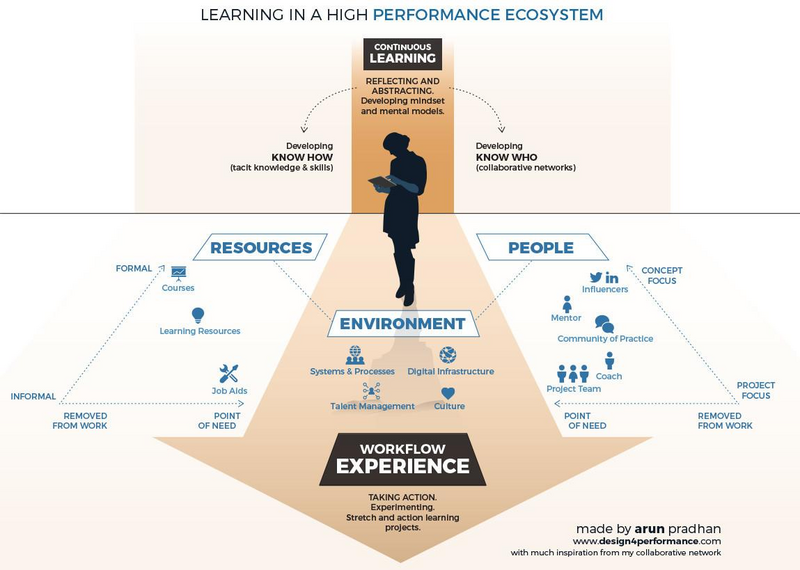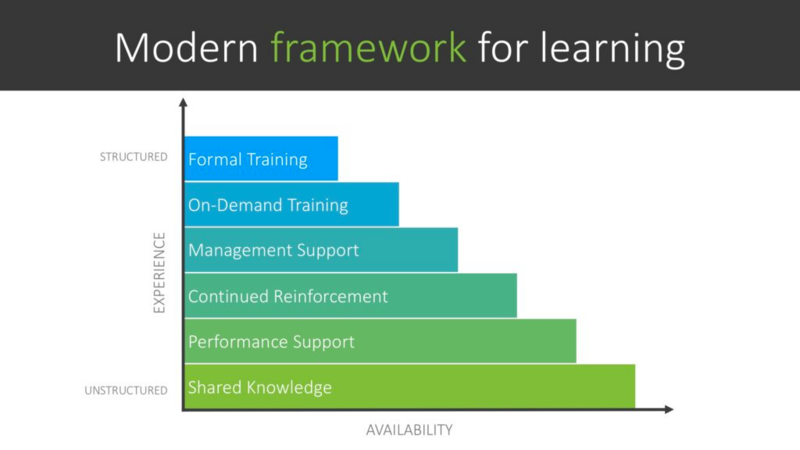ATD Blog
To Keep Pace, L&D Must Adopt an Ecosystem Mindset
Mon Aug 20 2018

Everything impacts everything in the modern workplace.
A decision made within one department affects five other departments. One employee’s departure causes three other teams to scramble to fill the gap. A negative customer interaction in one store has unpredictable consequences for the entire chain. The cross-functional nature of modern business automatically creates a level of organizational interdependence for which many teams are not prepared. As a result, companies fail to move forward, instead spending their time and effort spinning in circles as they try to figure out which lever to pull first.
This concept of mutual reliance applies to the employee experience too. Performance does not take place in a vacuum. Rather, employees are influenced—directly and indirectly—by the ecosystem that surrounds them. This includes factors such as the people with whom they work, the resources they use on the job, and the general workplace environment. This is a critical consideration for L&D professionals as they try to provide support. Many training programs fail to have the intended impact because they were developed and executed without regard for everything else impacting the employee related to that topic. Therefore, to enable learning at the speed of modern business, L&D must adopt an ecosystem mentality and leverage the full range of potential solutions when addressing a performance challenge.
So what’s included within a learning and performance ecosystem? And how can L&D best apply these components to enable employees and drive results for the business? Last year, Arun Pradhan brought together an extensive group of collaborators to put some structure around what Helen Blunden referred to as “the richness of learning inside and outside the workplace.” Arun’s resulting Learning in a High-Performance Ecosystem model (below) is a great visual representation of this concept. It demonstrates how an ecosystem is more than just technology and content. It’s a dynamic collection of people and tools that work together to enable an individual.

The first step in adopting an ecosystem mentality is to recognize the interrelatedness of the included components. Formal training represents only a small part of the overall performance puzzle. Developing a collaborative network is just as (if not more) important as engaging with learning resources. These elements come together within the workflow, where employees function within their environment and ultimately reinforce and expand their knowledge through practical experience. This is what workplace learning looks like today—regardless of L&D’s current perspective.
Once L&D professionals recognize the full scope of their ecosystem, they must determine how to best execute within it to address timely performance challenges. Based on my practical experience implementing this mentality, I created the Modern Learning Ecosystem (MLE) Framework (below). This decision-making framework helps L&D teams align and apply their existing tactics within the scope of an organizational ecosystem.

The full range of workplace learning tactics can be mapped within each layer of the MLE Framework. For example, e-learning fits within the Formal Training layer while job aids align to the Shared Knowledge layer. Once L&D has mapped their tactics to the framework, they can use it to make informed decisions about how to address any performance challenge. They simply start at the bottom and move up through each subsequent layer, going only as high within the framework as needed. So, if publishing a wiki article on the topic will solve the problem, only the Shared Knowledge layer would be activated.
However, if a problem is more complex and therefore requires a more structured approach, L&D should move higher within the framework. When applying the upper layers, L&D must also include tactics from those layers beneath to strengthen the overall solution. For example, if the solution will include classroom activities (Formal Training), every layer of the framework should be considered to maximize the impact of the instructor-led event. This may include job aids (Shared Knowledge), designated subject matter experts (Performance Support), practice exercises (Continued Reinforcement), coaching guides (Management Support), and post-class online content (On-Demand Training).
Everything impacts everything. An ecosystem isn’t something you need to create. An L&D professional doesn’t have to change everything they do to apply this mentality. Rather, it’s a reimagination of how learning and performance tactics are applied within the context of the modern workplace. Everyone within an organization would benefit from thinking this way and taking a more holistic approach to their work. This is especially true for L&D as a support function. By aligning their tactics with the realities of the workplace ecosystem, L&D can improve its value and provide the right support at the right time, in the best format, and in the most appropriate amount, thereby keeping pace with the needs of the business.
